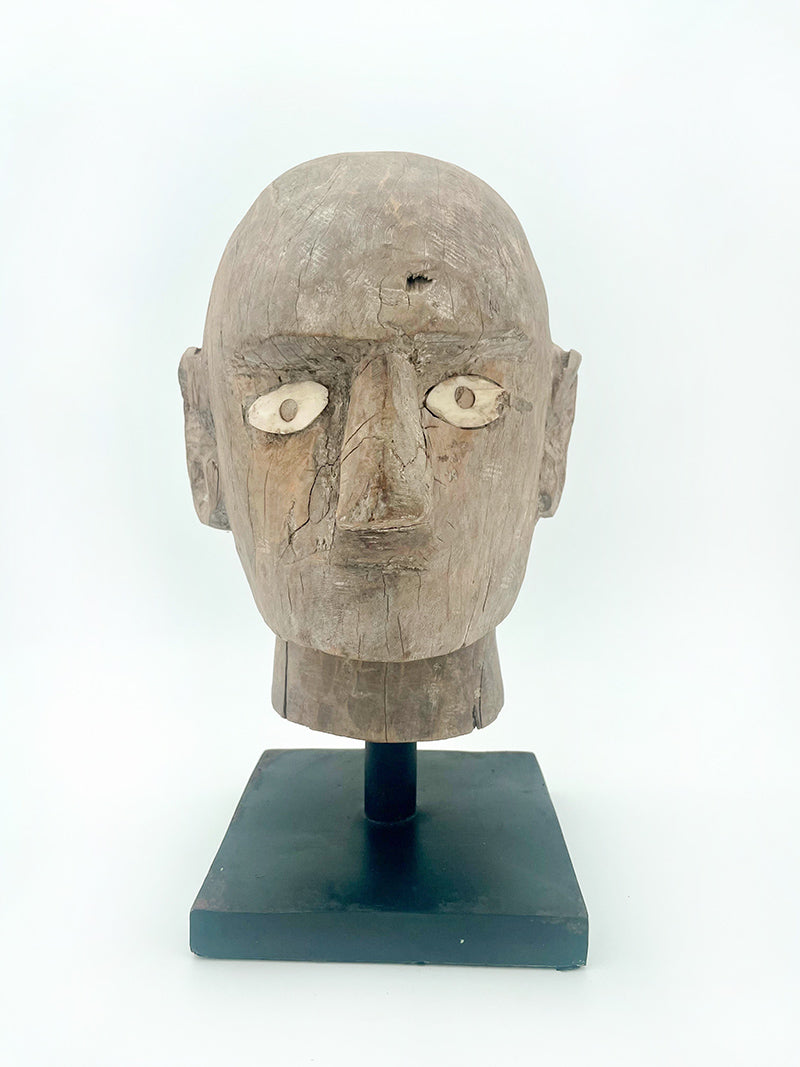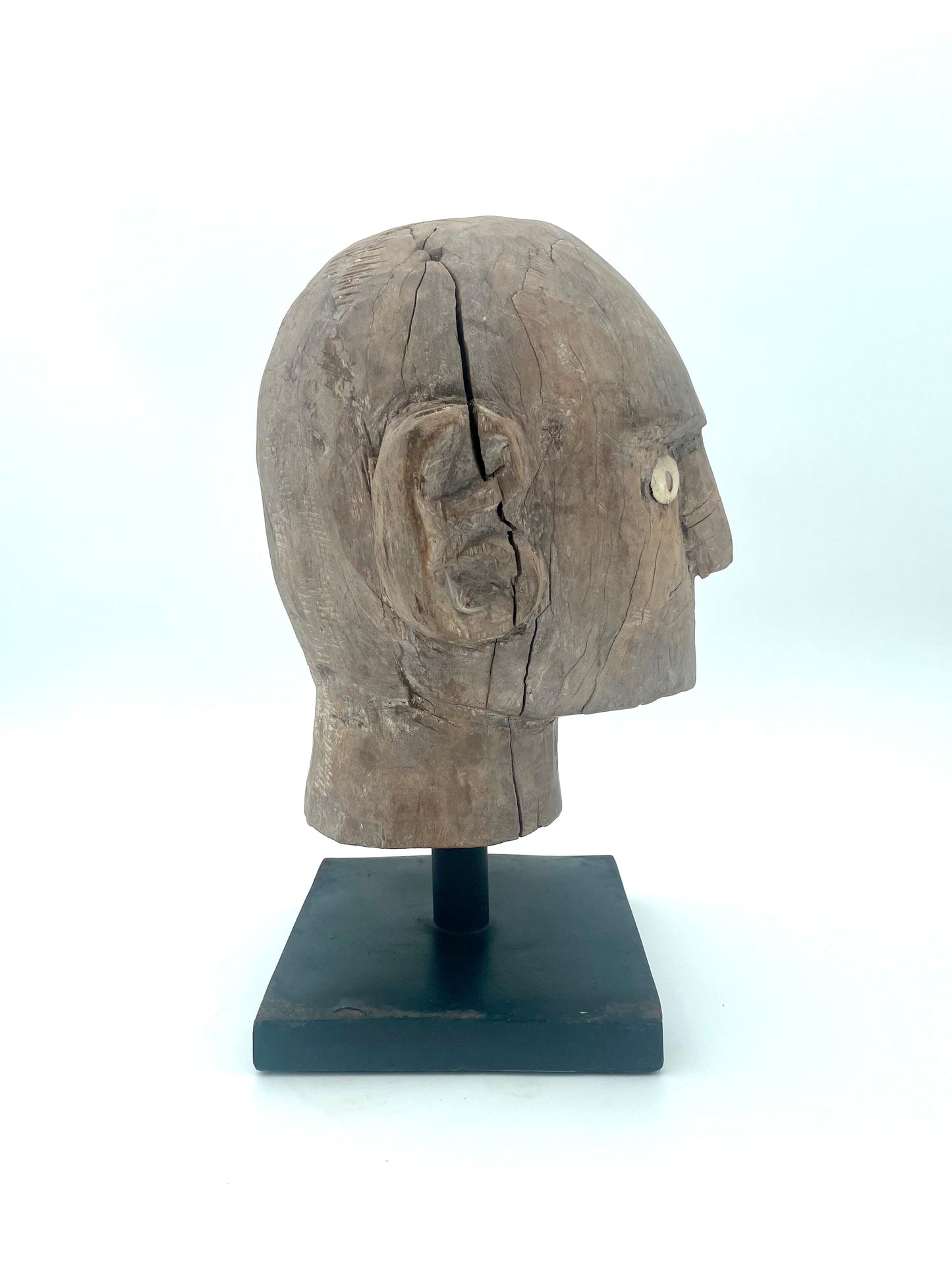The Fabulist
Sulawesi Toraja Head
Sulawesi Toraja Head
Couldn't load pickup availability
On the southern part of the island of Sulawesi, Indonesia, the Toraja people carve life-sized wooden effigies of dead elites. The tau-tau (“little person”, or “person-like”) are meant to commemorate the person and serve as a portrait as well as vessel for the spirit of the deceased. Some of the Toraja are part of a Christian minority in Indonesia, whose population is largely Muslim. Whilst Christianity bars the worship of other gods, spirits and idols, the Christian Torajas themselves are respectful of these sculptures. Some tau-tau come with a golden cross around their necks, or with a wooden bible.
During the process of carving the tau-tau, each stage comes with ritual offerings. Stages include the felling of a live jackfruit tree, treating the wood with coconut oil until it turned from yellow to brown, and carving the tau-tau’s head from the top of the trunk (and the feet from the lower end). At the beginning, a dog and chicken would be sacrificed; at the end of the carving process, so would a pig. The tau-tau would then be clothed and consecrated with prayers to become a “bombo dikita”: a “soul that is seen”.
A tau-tau ensures that the person’s name and deeds remain in descendants’ memories for a long time to come. It also links the communities of the living and the dead and guides the ongoing relationship between them. Traditionally, the vertical, inward-facing left hand is “pa’rinding”, “a wall” of shelter for the community, in exchange for offerings from the living (represented in the upward-facing right hand). People would have personal relationships with these effigies, even giving them new clothes as old garments frayed over time. Family would recount of their identities and life histories even if they had not necessarily met in real life.
This is a hand carved Tau Tau head was made in the 1980s specifically for the tourist market. It is carved in the same style using the same wood as the originals.
Measurements: 330mm High x 180mm Wide x 190mm Deep.
Share







